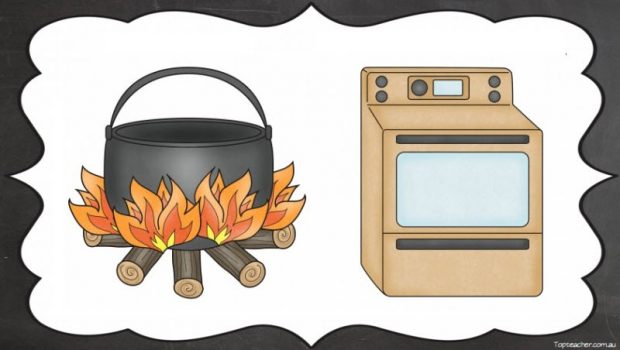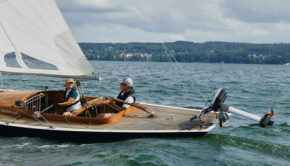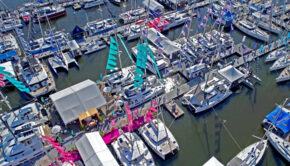Past and present in marine industry
Published on January 11th, 2022
The RCR Yachts newsletter is a reliable source for information from the Great Lakes, and as a business that sells new and used sailboats and powerboats, operates several boat yards and marinas, and provides service and repair work, they have seen and done a lot.
As RCR Yachts celebrates their 50 year anniversary in 2022, this report by CEO and Owner Don Finkle reflects on the past and present:
I promised myself that over Christmas break I would deal with the piles and boxes we have accumulated at RCR’s home office over the past 50 years. As my family would attest, I am not the best when it comes to throwing things out. They even accused me of being a hoarder, but that is a bit rough.
Going through this material brings back so many memories. The boatbuilders we have represented, most of whom are no longer in business. The boats we sold, the boats we owned, the racing we have done, the projects we were involved with, many regattas, the ups and downs of the industry over the past 50 years. The people who worked here and those who still work here.
Of course there are all the people we met and did business with, and many who became friends. We were blessed to personally know some of the big names in the boating industry, those who were in it because of their love of boats as opposed to the bean counters who came later.
It is striking to see the change from what the business looked like in 1972 to what it looks like today. We were blessed to be in the thick of it during the glory days of the fiberglass boatbuilding boom of the 1970s and 1980s.
My parents’ first two boats in the 1950s and 60s were wood. Then in 1966 we got our first fiberglass sailboat, a second hand 24-foot Shark that was built by George Hinterhoeller across the Niagara River from us. We were like so many other families who took advantage of the access to boating the burgeoning fiberglass boatbuilding industry made possible.
When we started out at RCR, the customer demand was there and so was the availability of new boats. Builders proliferated in both the US as well as Canada. There were few used boats to compete with so selling new was much easier than in later years.
It was fun to deliver nice new, shiny boats to people who were just getting into the sport and learning to enjoy what we all love. Boats were simpler and less expensive then and we often sold to young families. When we look at a 50 year old boats today it is easy to see why boats cost so much less at that time.
Sailors did not expect all the features that are now considered “must haves” in today’s boats. The equipment was basic, the boats were so much smaller in every other dimension for their length. They may not stack up against what is being built today (neither does most anything else from the 1970s), but sailors loved them and so did we.
Along with all the many positives we enjoyed over the past half-century, there are a few negatives too. From a business standpoint, the loss of so much of the North American boating industry ranks near the top. We could fill a whole newsletter with just the names of the companies that were key players in the day but who no longer exist.
Most of all we miss the many contacts we had at those companies. From the designers and managers at the top down to the men and women on the shop floor, they were generally really solid people who did a fine job. We got to know many of them personally. Our frequent visits to the plants expanded our knowledge of boatbuilding and materials.
A combination of changing market dynamics, poor ownership as a result of sales of companies to the wrong people, government actions and saturation (too many players) were more than most companies could handle.
The idiotic US federal luxury tax of the early 1990s was the death knell for many businesses. A purely political ploy that actually cost the US a lot of money and raised almost nothing in taxes. The “rich” refused to be soaked and simply bought and kept boats offshore.
Plants closed, and lost were the taxes companies and employees would have paid. We were among the many dealers whose sales were hurt accordingly. That idea is apparently going to be tried in Canada now and we predict it won’t have the intended consequences there either.
How am I doing with my organizing and purging project? Well, progress is being made but it is not going to be completed immediately. As I get more brave about the tossing, I keep coming across things just too important (at least to us) to shred.
A half-century of history is in the boxes and files, much of it before we ran the business mostly by computer. There will no doubt be some stories contained in them that we can bring to our readers as we move along.
A note about consolidation:
The boating industry is following the same path of much of business elsewhere, companies are being swallowed up, merged, or in some cases folded. Almost every day our industry news feeds report another company that has been bought up.
The result is we are going to see fewer choices, especially in hardware. The products will be there, but fewer companies will be making them. Are you old enough to remember Barient or Barlow winches? Kenyon and Hall spars? Some of the names you have come to know over the years will be gone.
There are usually two sides to every story, and in this case the companies that remain will be stronger and hopefully will have more ability to innovate and spend R&D dollars. Customers sometimes lament the fact boating lags behind other areas when it comes to technical advancement. The truth is sailing is a very small segment of the whole recreation industry, and dollars flow to areas of greatest return.









 We’ll keep your information safe.
We’ll keep your information safe.